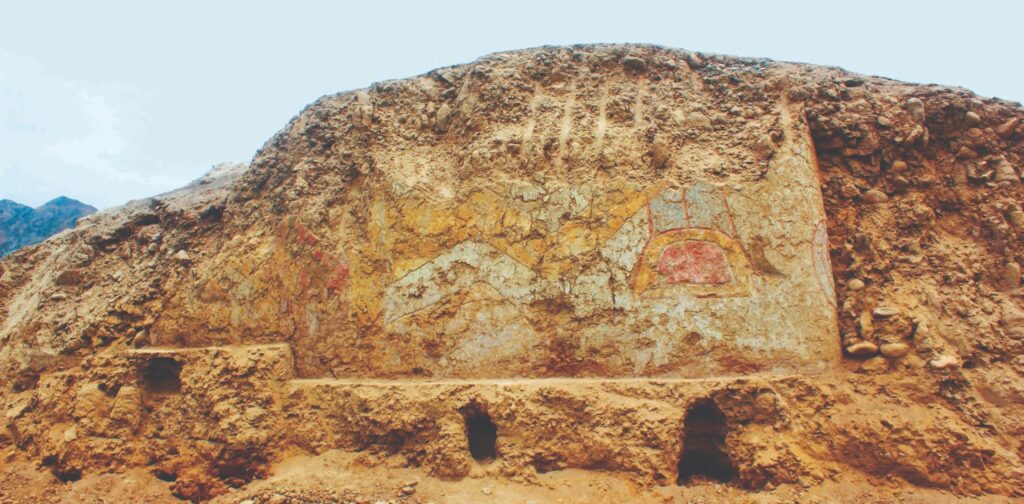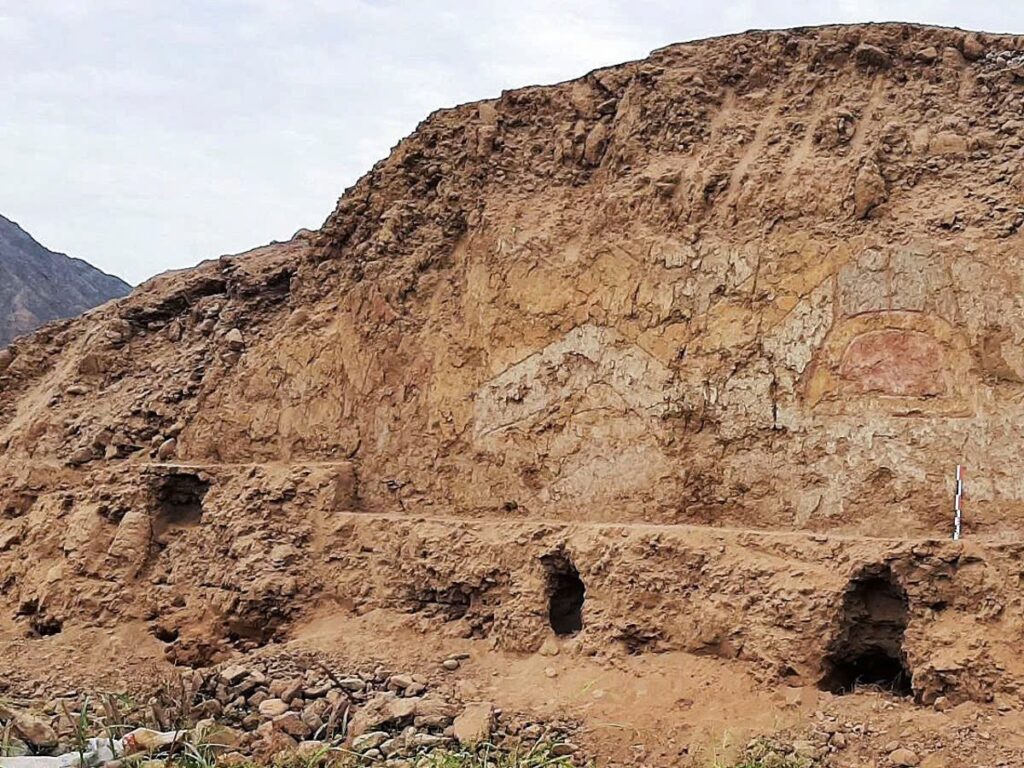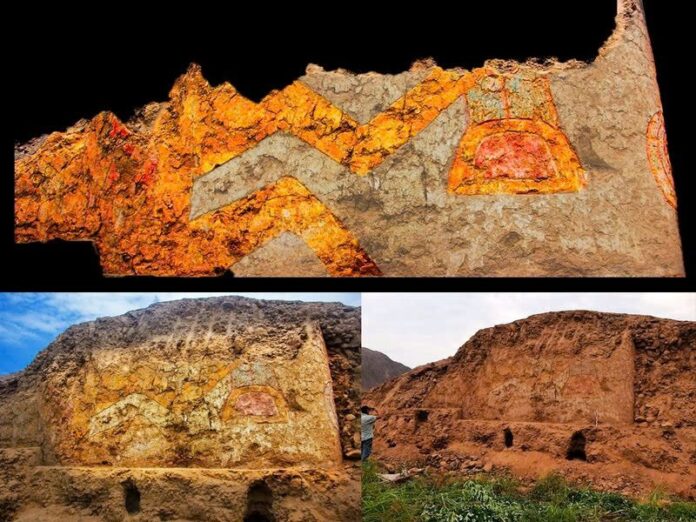3,200-Year-Old Temple Discovery Sheds Light on Pre-Columbian Beliefs

In a thrilling archaeological find, experts have unearthed a 3,200-year-old mural in northern Peru, offering a rare glimpse into the religious practices of the ancient Cupisnique culture. The discovery, made in the Virú province of Peru’s La Libertad region, has excited researchers and history enthusiasts alike.
A Glimpse into Pre-Hispanic Spirituality
The mural, painted on the side of an ancient adobe temple measuring 15 by 5 meters, depicts a stylized zoomorphic Spider God. This deity, wielding a knife, is thought to be associated with rain and fertility – crucial elements for the agricultural societies of pre-Columbian Peru.

Archaeologist Régulo Franco Jordán, leading the research, explained the significance of the find:
“What we have here is a shrine that would have been a ceremonial center thousands of years ago. The spider on the shrine is associated with water and was an incredibly important animal in pre-Hispanic cultures, which lived according to a ceremonial calendar.”
The Artistry of Ancient Peru

The mural showcases the artistic skills of the Cupisnique people, with its use of ochre, yellow, gray, and white paint creating a striking image that has endured for millennia. Its strategic location near a river further emphasizes the importance of water in the culture’s religious practices.
Threats to Cultural Heritage

Unfortunately, the site faces modern-day challenges. About 60% of the complex, located 500km north of Lima, was damaged in November of the previous year when local farmers, unaware of its historical significance, used heavy machinery to expand their crop fields.
The Cupisnique Legacy

Once thought to be a coastal variant of the Chavín culture, the Cupisnique are now recognized as an independent cultural tradition that influenced the later Chavín culture. Their civilization flourished along the Peruvian coast from the Virú valley to the Lambayeque drainage, maintaining close relationships with adjacent highland cultures.
The Cupisnique people were masters of irrigation agriculture and fishing, thriving in the rich but arid lands of the lower coastal valleys. This newly discovered mural not only provides insight into their religious beliefs but also highlights the sophisticated artistic and architectural achievements of this ancient Peruvian culture.
As the world eagerly awaits further investigation of this remarkable find, the mural of the Spider God stands as a testament to the enduring legacy of Peru’s pre-Columbian civilizations.

